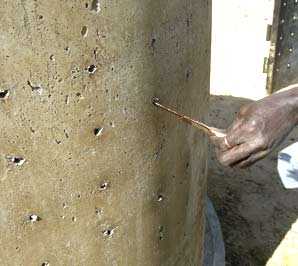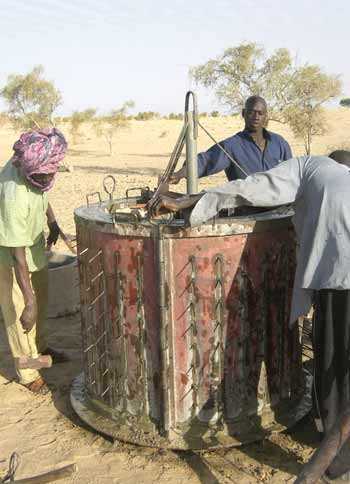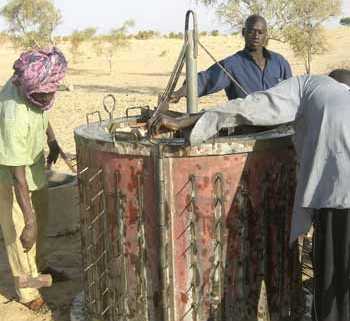15. Wells in the sand
A desert well is constructed as if it was made of two tubes, one been inserted inside the other. The first tube, of bigger diameter, travels downwards until it reaches the water level.
The second tube is inserted into the first one. It continues the descent of the first one into the ground soaked with water. This tube is full of small holes so that the water can enter through them and fill the well. It is the water-catching tube and of course, it is the most important part of the well.

One of the cylinders of cement that will form the water catching tube when they are welded together
The bottom of the tube is closed with a holed tap to stop the sand and earth from entering into the well, but allowing that water can enter from the bottom as well. In order to avoid the sand entering the well through the holes and filling it little by little, the expert well-digger has surrounded the tube with a filter made of gravel coming from the river.
When this part of the well is built wrongly, without holes for instance, or without a tap, there would be only a little water available in the well or it would be soon filled with sand.
These are exactly the 2 defects that Ibrahim found in our well.

The holes are inclined upwards so that little, if any sand can enter the water in the well.
The best wells, like the one we are constructing, also have an ingenious system made of a third holed tube that goes down into the earth for a further five meters, under the holed bottom tap of the well. This tube, filled with filtering gravel, allows the level of water to return to the maximum in a very short time when the people draw a lot of water.

The cylinders are fabricated on the spot
| Previous | INDEX | Next |
















Leave a Reply
Want to join the discussion?Feel free to contribute!